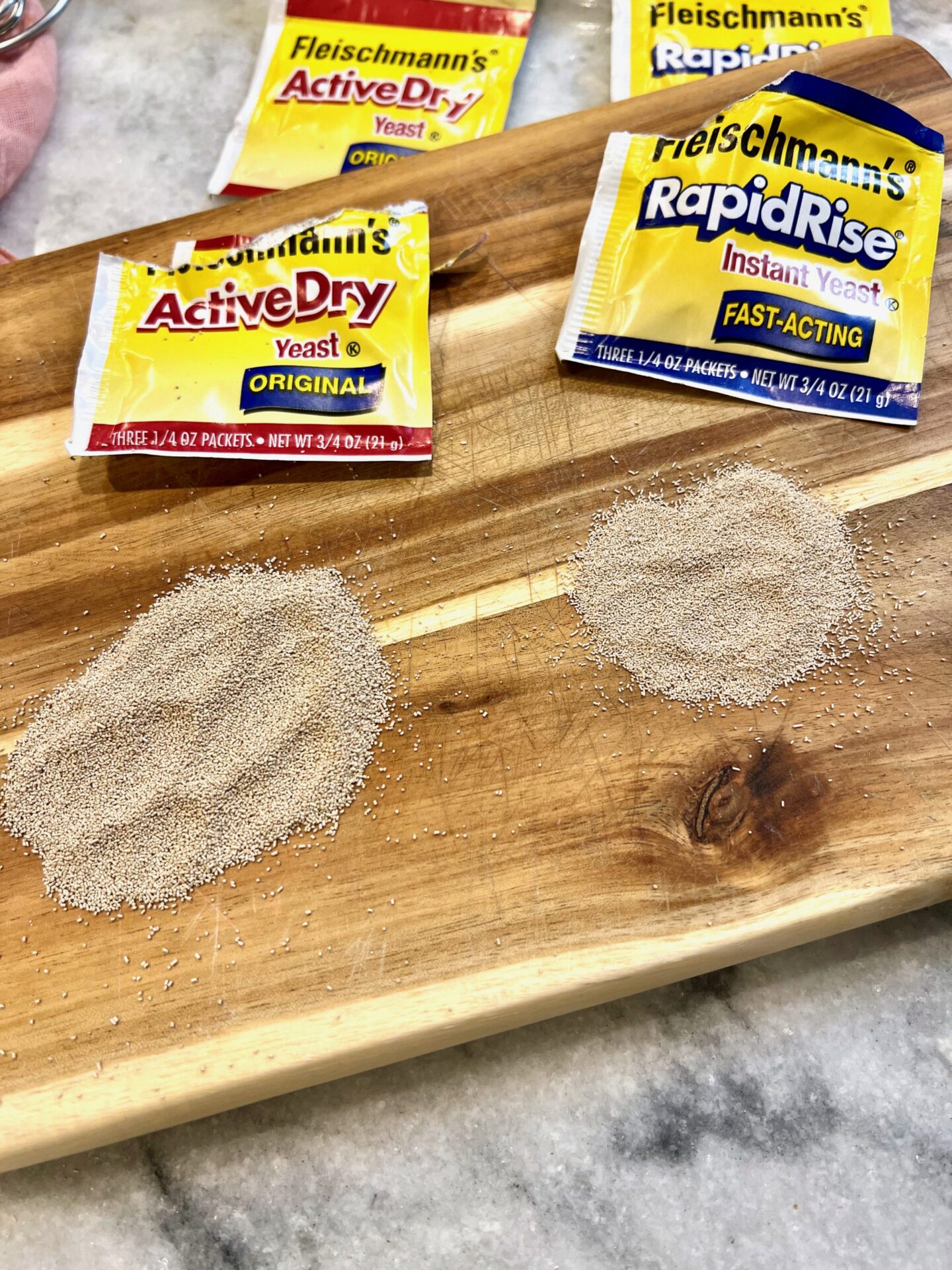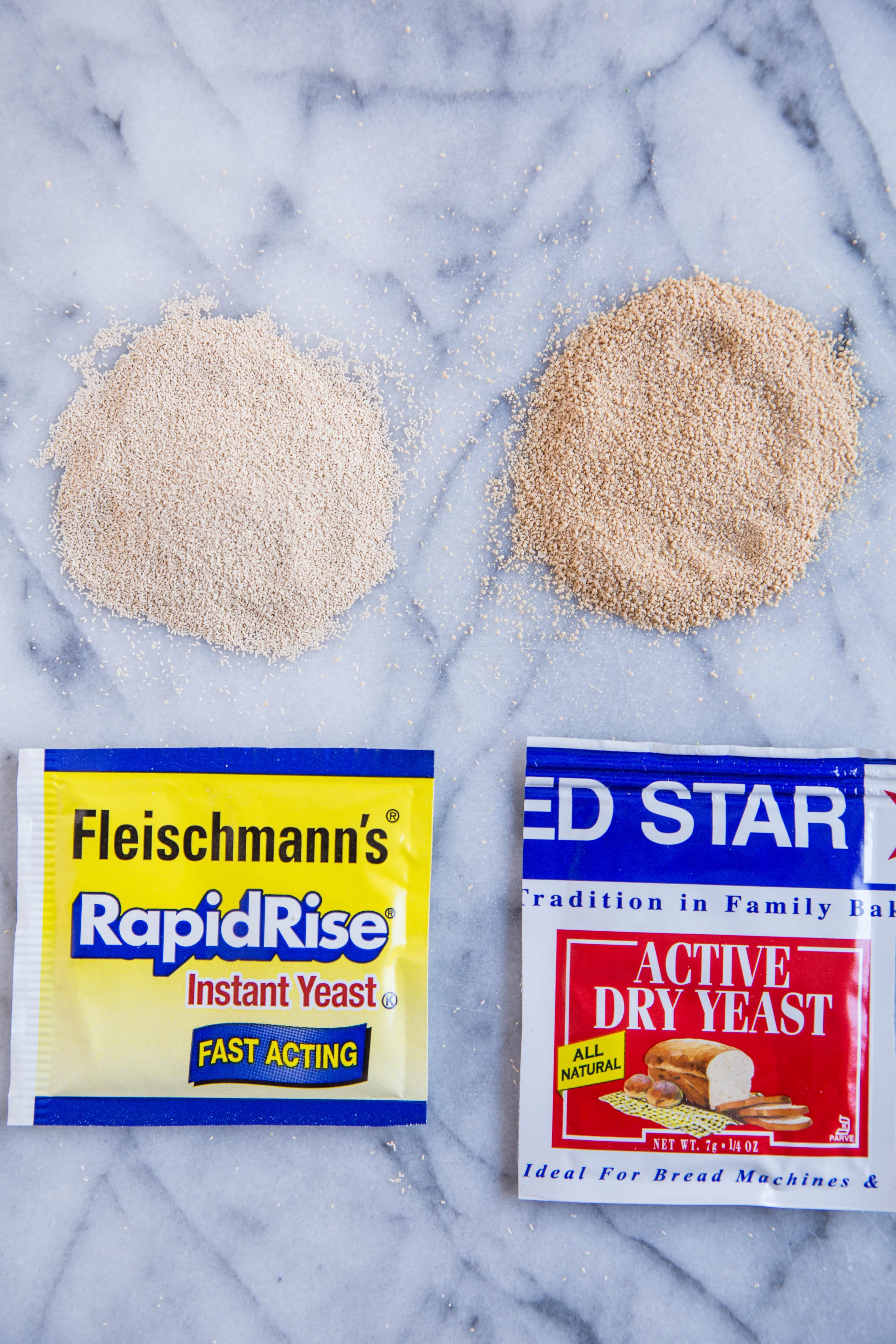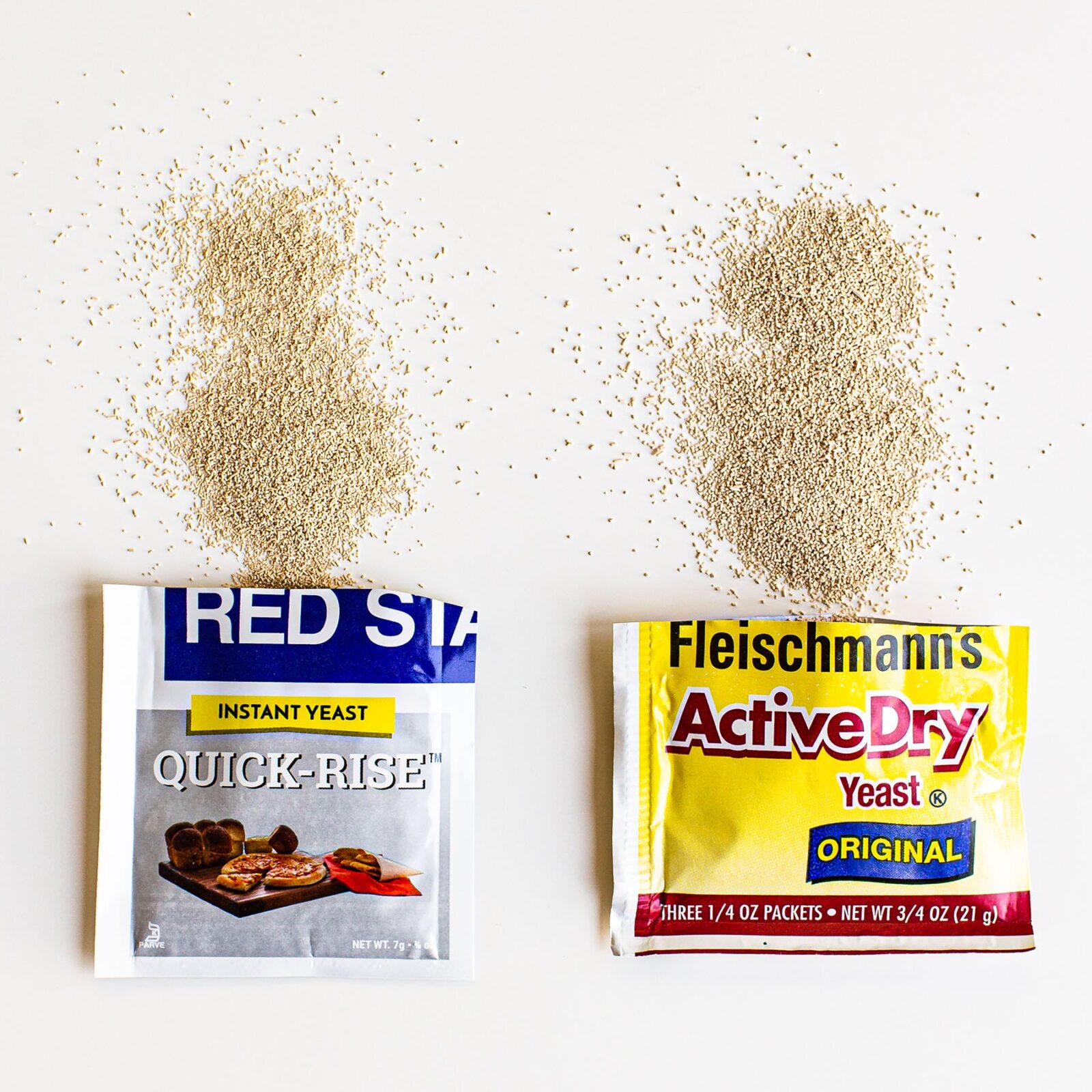Baking is a fun and tasty activity. Yeast is an important ingredient in many baked goods. There are two main types of yeast: active dry yeast and instant yeast. Many people wonder which one to use. This article will help you understand the differences between them.

Credit: bakingbycece.com
What is Yeast?
Yeast is a tiny living organism. It is a type of fungus. Yeast helps bread rise. It does this by eating sugar. When yeast eats sugar, it makes carbon dioxide. This gas makes the dough puff up. Yeast also adds flavor to bread. There are different types of yeast. The two most common are active dry yeast and instant yeast.
Active Dry Yeast
Active dry yeast is one of the oldest types of yeast. It comes in tiny granules. These granules are dry. Before using it, you must activate it. This means you need to mix it with warm water and sugar. This helps the yeast wake up.
How To Use Active Dry Yeast
Here are some steps to use active dry yeast:
- Measure the warm water. It should be between 100°F and 110°F.
- Add sugar to the water. This gives food to the yeast.
- Add the yeast. Stir gently.
- Let it sit for about 5 to 10 minutes. You will see bubbles.
- Now, mix it into your dough.
Advantages Of Active Dry Yeast
Active dry yeast has some benefits:
- It has a long shelf life. It can last for years if stored well.
- It works well in many recipes.
- It is easy to find in stores.
Disadvantages Of Active Dry Yeast
There are some downsides to active dry yeast:
- You must activate it before use. This takes extra time.
- It can take longer to rise than instant yeast.
Instant Yeast
Instant yeast is newer than active dry yeast. It is also known as rapid-rise yeast. This yeast comes in smaller granules. You do not need to activate it before using it. You can mix it directly with flour.
How To Use Instant Yeast
Using instant yeast is simple:
- Measure the instant yeast.
- Add it to your flour mix.
- Mix in the other ingredients, like water and sugar.
- Then, knead the dough as usual.
Advantages Of Instant Yeast
Instant yeast has many benefits:
- You do not need to activate it. This saves time.
- It rises faster than active dry yeast.
- It can be mixed directly with dry ingredients.
Disadvantages Of Instant Yeast
Instant yeast also has some downsides:
- It may not be available in all stores.
- It has a shorter shelf life than active dry yeast.

Credit: www.thekitchn.com
Comparing Active Dry Yeast and Instant Yeast
Now, let’s compare these two types of yeast. Here is a table to help:
| Feature | Active Dry Yeast | Instant Yeast |
|---|---|---|
| Activation | Needs activation | No activation needed |
| Rising Time | Longer rising time | Faster rising time |
| Granule Size | Larger granules | Smaller granules |
| Shelf Life | Longer shelf life | Shorter shelf life |
| Availability | Widely available | May not be available everywhere |
Which Yeast Should You Use?
The choice between active dry yeast and instant yeast depends on your needs. If you have time, you can use active dry yeast. It is great for traditional recipes. However, if you want to save time, choose instant yeast. It is perfect for quick recipes.
Tips For Using Yeast
Here are some tips to help you when using yeast:
- Always check the expiration date. Old yeast may not work.
- Store yeast in a cool, dry place. This keeps it fresh.
- Use the right amount of yeast. Too little or too much can change the bread.
- Do not mix salt directly with yeast. It can kill the yeast.
Conclusion
In conclusion, both active dry yeast and instant yeast are useful for baking. Each type has its own strengths and weaknesses. Understanding these differences helps you choose the right yeast for your recipe. Whether you prefer the traditional method or a quicker approach, both yeasts can help you create delicious bread and baked goods. Enjoy your baking adventures!















Leave a Review